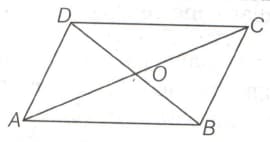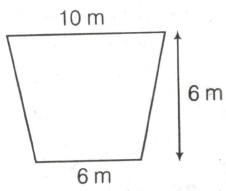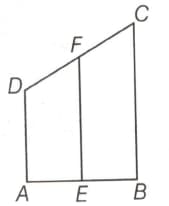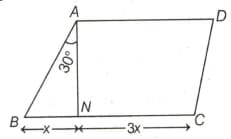Parallelogram, Rhombus and Trapezium
Important Questions on Parallelogram, Rhombus and Trapezium
If the side of a rhombus is and one diagonal is , the area of the rhombus is
The ratio of semiperimeter of a parallelogram to its longer side is same as the ratio of its longer side to its shorter side. If the shorter side measures , find the maximum possible area of the parallelogram.
In the adjoining figure, a parallelogram ABCD is shown. and . Find BC.

In the adjoining figure, the cross-section of a swimming pool is shown. If the length of the swimming pool is , then the amount of water it can hold is :

ABCD is a trapezium, in which and F are the mid-points of AB and CD respectively, then EF is :

is a quadrilateral . The lengths of perpendiculars from and on and respectively. Then, the area of) is :
The area of a hexagon whose one side is ,is :
The cross-section of a canal is in the shape of a trapezium and the area of cross section is . If the canal is wide at the top and wide at the bottom the depth of the canal is :
The area of a trapezium is and the ratio of parallel sides is Also the perpendicular distance between them is , the longer of parallel sides is :
is a trapezium in which and . If its diagonals intersect each other at , then ratio of areas of triangles and is :
The lengths of two parallel sides of a trapezium are and and its height is . Its area is :
The ratio of the lengths of the diagonal of a rhombus is Then, the ratio of the area of the rhombus to the square of the shorter diagonal.
If the perimeter of a rhombus is p and lengths of its diagonals are a and b, then its area is :
In the adjoining figure, the ratio of the areas of the parallelogram and that of triangle is :

The two adjacent sides of a parallelogram are and respectively. The altitude drawn on the longer side is , then the area of the parallelogram is :
The distance of a long side of a parallelogram from the opposite side is . The area of the parallelogram is :
A parallelogram has sides and and one of its diagonal is long. Then its area is :
Area of a rhombus is . One of the diagonal is half of the other diagonal. The sum of the diagonals is _____.

